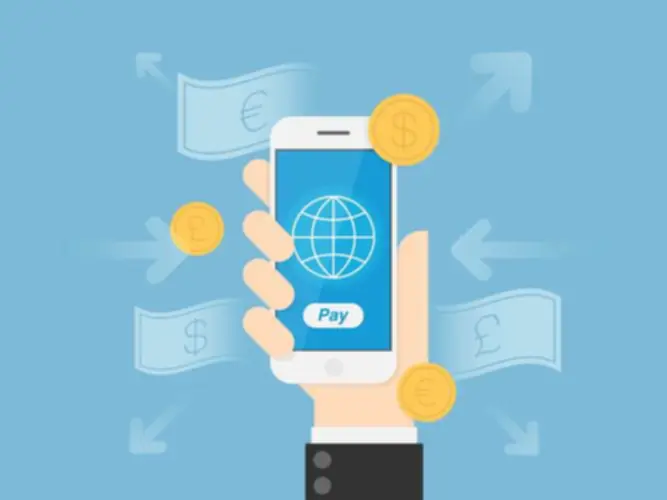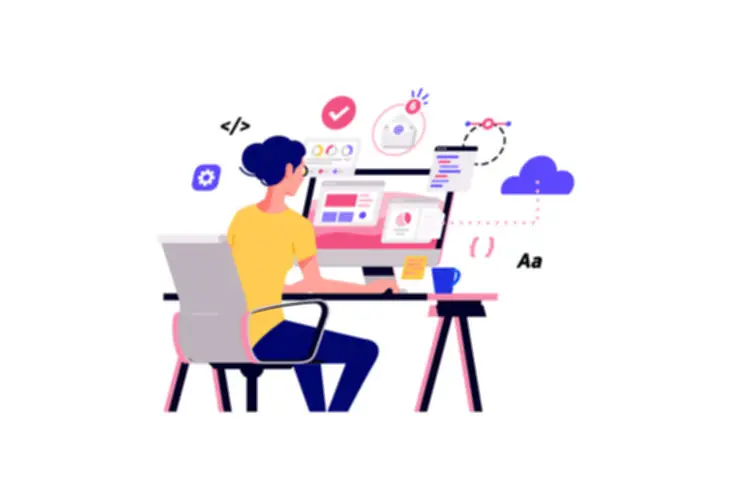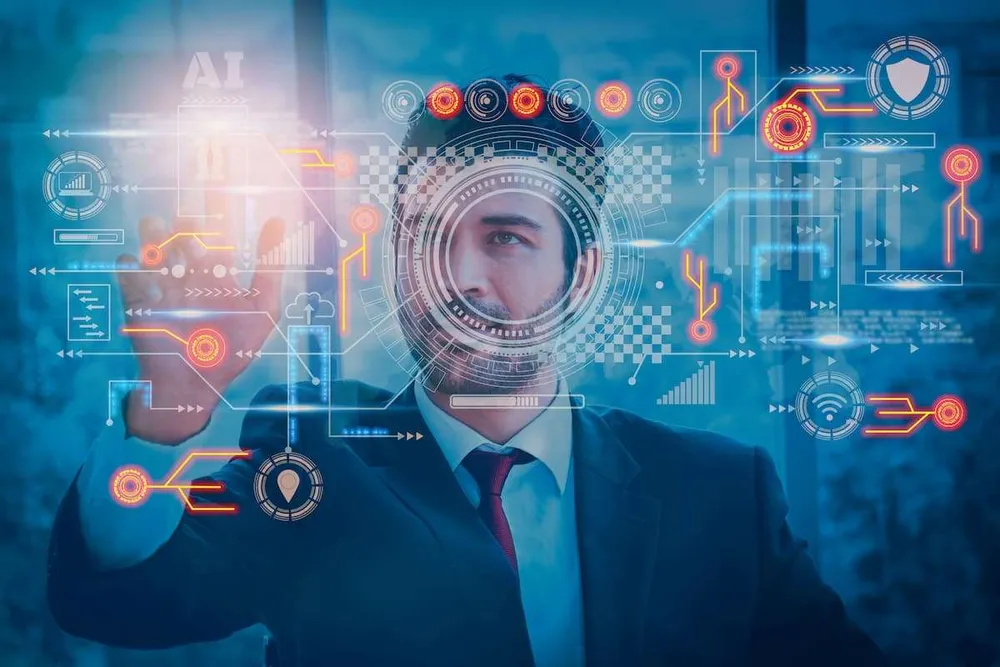6 Benefits of AI in Healthcare & Hospitals
AI in healthcare: The future of patient care and health management
AI algorithms can be trained to predict an individual’s response to a given drug based on their genetic makeup, medical history, and other factors. This personalized approach to drug therapy can lead to more effective treatments and better patient outcomes [57, 58]. In the review article, the authors extensively examined the use of AI in healthcare settings. By imposing language restrictions, the authors ensured a comprehensive analysis of the topic. From scheduling appointments to processing insurance claims, AI automation reduces administrative burdens, allowing healthcare providers to focus more on patient care. This not only improves operational efficiency but also enhances the overall patient experience.
Can AI replace human intelligence?
Will AI replace humans? No, AI will not replace human intelligence, as it is humans who are developing AI applications through programming and algorithms. Automation makes it easier to replace manual labour, and today, in every sector, these AI technologies are making it easier to complete complex tasks.
This allows systems to reason and learn from data, leading to better decision-making and patient outcomes. Easy exchange of information is one of the undoubted advantages of AI in healthcare. AI enables healthcare professionals to share medical data, knowledge, and insights across different platforms and formats. Besides, AI applications can be integrated with EHRs and patients’ wearable devices. Another area where the greatest AI benefits in healthcare are accuracy and efficiency is administrative activities. Health professionals usually have plenty of repeating routines like appointment scheduling, billing , or claim processing.
WHO’s Approach on Artificial Intelligence for Health
Finally, substantial changes will be required in medical regulation and health insurance for automated image analysis to take off. Today, a large number of health trackers such as Apple, FitBit, and Garmin are used to monitor the activity levels and heart rate of users. These are smart devices integrated with AI, which send alerts to perform the necessary activities and share them with doctors. Handling uncertainty or contradictory information is challenging, as they operate based on rigid rules rather than probabilistic reasoning. Recognizing the ultimate benefits of speech recognition and analytics solutions, many organizations began to actively adapt them.
Altering the existing legal framework to shift treatment responsibility to AI developers seems improbable, and it would likely pose too great a risk for AI developers to assume liability for malpractice. Furthermore, patient trust in AI-managed treatments has not yet reached a level that would support widespread implementation. Even when health care providers have trained their AI systems on sufficiently large medical datasets, it is important that they mitigate the potential risks. They should design specific workflows where AI supports, rather than replaces, physicians in the diagnostic process—where AI acts as a valuable assistant rather than a substitute. A professor and researcher at the University of Hawaii, John Shepherd, posted a paper in 2021 showing how deep learning AI technology can improve breast cancer risk prediction. The algorithms analyzed a dataset of 25,000 mammograms and were shown to improve the risk prediction for screening-detected breast cancer.
Tools like Nuance’s Dragon Ambient eXperience are able to transcribe a patient/clinician interaction and use this information to generate appropriate electronic clinical documentation. They are programmed with sets of data to develop algorithms that allow them to quickly generate output based on pattern recognition. This is why they are capable of both generating your grocery list and recommending the next book you should read. Other tools, such as those used in the healthcare industry, are programmed on more limited data sets related only to their intended use.
More than half of primary care doctors are pressured by deadlines and other job factors. AI aids in the streamlining of procedures, the automation of activities, the quick sharing of data, and the organization of operations, all of which relieve medical personnel of the burden of juggling too many jobs. The capacity to rely on a vast and expanding corpus of knowledge paves the way for more effective examination of dangerous illnesses. In terms of real-time data, research can profit from the vast amount of accessible information. Especially the way it has played a role against COVID-19, we can see a shining future of artificial intelligence in the medical sector. Patients can also provide feedback on hospitals and doctors they had experience with.
See how ForeSee Medical can empower you with insightful HCC risk adjustment coding support and integrate it seamlessly with your electronic health records. As healthcare enters the era of AI and more possibilities emerge, organizations everywhere should be more motivated than ever to work with healthcare providers who improve patients’ lives. For example, these AI systems can be invaluable in tracking health metrics and detecting any abnormal changes in real time for patients with chronic conditions like diabetes or heart disease. When the AI system detects concerning patterns, like fluctuations in heart rate or blood glucose levels, it can alert physicians or home caretakers to take preventative action. One use case example is out of the University of Hawaii, where a research team found that deploying deep learning AI technology can improve breast cancer risk prediction. More research is needed, but the lead researcher pointed out that an AI algorithm can be trained on a much larger set of images than a radiologist—as many as a million or more radiology images.
Medication management is another area where AI can play an important role in empowering patients. By analysing patient data, such as prescription histories and vital signs, AI algorithms can help healthcare providers improve medication management and reduce the risk of adverse drug events. Finally, AI can increase transparency in healthcare by providing patients with more importance of ai in healthcare information about their health and the treatments they are receiving. This can empower patients to make informed decisions about their care and help to build trust between patients and healthcare providers. With continuously increasing demands of health care services and limited resources worldwide, finding solutions to overcome these challenges is essential [82].
New natural language processing (NLP) and deep learning (DL) algorithms can assist physicians in reviewing hospital cases and avoiding denials. One of the most significant benefits of AI is improved diagnostic speed and accuracy. AI algorithms can process large amounts of data quickly and accurately, making it easier for health care providers to diagnose and treat diseases. One of the key ways in which AI is being used in diagnostic histopathology is through image analysis.
Most of these technologies have immediate relevance to the healthcare field, but the specific processes and tasks they support vary widely. Some particular AI technologies of high importance to healthcare are defined and described below. The industry can look to AI’s ability to expedite diagnosis and potentially transform healthcare by offering more accurate, timely and cost-effective interventions. AI analysis of patient records, appointment schedules, and inventory levels can also identify areas for improvement and streamline workflows.
Artificial Intelligence (AI) has been increasingly integrated into medical and dental education, offering numerous benefits to both students and instructors. One of the main applications of AI in this field is virtual simulation and training, allowing students to practice complex procedures on virtual patients without risking harm to real patients. This type of hands-on training is also customizable, enabling students to work at their own pace and repeat procedures until they have mastered them. The 1980s and 1990s brought the proliferation of the microcomputer and new levels of network connectivity. Artificial intelligence (AI) in the healthcare sector is receiving attention from researchers and health professionals. Few previous studies have investigated this topic from a multi-disciplinary perspective, including accounting, business and management, decision sciences and health professions.
When you look back to early-2020, when the pandemic hit, video doctor visits were met with some uncertainty. Patients didn’t understand how a doctor can take blood pressure or evaluate conditions efficiently if they were not face-to-face. However, in a recent survey, around 50% of Americans say they prefer healthcare professionals who offer phone or web-based consultations. Information from wearable devices can be an indicator of the probability of getting a specific illness or disease. As the industry leverages AI to collect, store, and analyze data, it could create a treasure chest of revolutionary information for healthcare. A great example of AI for medicine that helps improve the patient’s experience is Babylon.
Legal, ethical, and risk associated with AI in healthcare system
Therefore, the following sub-sections aim to explain the debate on applications in healthcare for AI techniques. The integration of AI in healthcare has immense potential to revolutionize patient care and outcomes. AI-driven predictive analytics can enhance the accuracy, efficiency, and cost-effectiveness of disease diagnosis and clinical laboratory testing. Additionally, AI can aid in population health management and guideline establishment, providing real-time, accurate information and optimizing medication choices.
There are countless benefits of AI in healthcare, but when accuracy matters, there’s no replacement for human intelligence. By augmenting human intelligence with technology, healthcare organizations can reach new peaks of efficiency and productivity. If these systems are trained on biased data, they can perpetuate or amplify existing biases, leading to unfair or inaccurate decisions. This bias could have far-reaching consequences, such as disparities in diagnoses or treatment recommendations across different demographic groups. RPA improves operational efficiency by automating tasks like appointment scheduling, ensuring accurate and prompt handling of high volumes of patient appointments.
Users report their symptoms into the app, which uses speech recognition to compare against a database of illnesses. Babylon then offers a recommended action, taking into account the user’s medical history. Entrepreneurs in healthcare have been effectively using seven business model archetypes to take AI solution[buzzword] to the marketplace. These archetypes depend on the value generated for the target user (e.g. patient focus vs. healthcare provider and payer focus) and value capturing mechanisms (e.g. providing information or connecting stakeholders). Further analysis could also identify why some parts of the world have not conducted studies in this area.
Physicists have been studying similar problems for years, using microscopic elements and their interactions to extract macroscopic states of various physical systems. Physics inspired machine learning approaches can thus be applied to study disease processes and to perform biomarker analysis. Additionally, data mining and big data are a step forward in implementing exciting AI applications. According to our specific interest, if we applied AI in healthcare, we would achieve technological applications to help and support doctors and medical researchers in decision-making.
Natural language processing (NLP) is a form of artificial intelligence that enables computers to interpret and use human language. NLP is being used in a wide range of health data applications, such as improving patient care through better diagnosis accuracy, streamlining clinical processes, and providing more personalized services. The most complex forms of machine learning involve deep learning, or neural network models with many levels of features or variables that predict outcomes. There may be thousands of hidden features in such models, which are uncovered by the faster processing of today’s graphics processing units and cloud architectures. Their combination appears to promise greater accuracy in diagnosis than the previous generation of automated tools for image analysis, known as computer-aided detection or CAD.
The paper focuses on tangible AI health applications, giving researchers an idea of how algorithms can help doctors and nurses. In this sense, Choudhury and Asan’s [26] scientific contribution provides a systematic review of the AI literature to identify health risks for patients. They report on 53 studies involving technology for clinical alerts, clinical reports, and drug safety. Considering the considerable interest within this research stream, this analysis differs from the current literature for several reasons. It aims to provide in-depth discussion, considering mainly the business, management, and accounting fields and not dealing only with medical and health profession publications. Common applications include diagnosing patients, end-to-end drug discovery and development, improving communication between physician and patient, transcribing medical documents, such as prescriptions, and remotely treating patients.
Because AI computers have the ability to “learn” from endless data sets and uncover patterns in this data, it is now being used to positively influence many areas of clinical care. What’s more, AI and machine learning are helping providers deliver more personalized medical treatments and care. The impact of AI goes beyond using data to influence health care research and diagnostics, it is also changing the way health care providers make clinical decisions.
How is AI beneficial to public health?
In public health research, AI can accelerate the steps of discovery and insights. Its ability to process and analyze complex and large-scale datasets transcends human capabilities, uncovering patterns and associations.
Namely, instead of taking on a large-scale, complex project, begin with a single-use case. Develop a proof of concept by using available data, and monitor and iterate your solution continuously. In an Accenture survey, 29% of patients who don’t want to use AI or virtual doctors say it is because they prefer to visit. Once patients understand that robotic surgery means a shorter hospital stay, less scarring, lower levels of blood loss, and a faster recovery, they might be more open to AI. While discussing illness prevention, it’s also worth mentioning how AI-powered wearables can help detect non-infectious diseases.
Traditional Healthcare System:
Artificial intelligence (AI) has the potential to transform how healthcare is delivered. Yet we need to understand the impact of AI on the healthcare landscape to pave the way for the adoption of AI solutions at scale. That’s why EIT Health is exploring two particular topics – the practical application of ethical considerations for innovators using AI and the impact of AI on healthcare organisations and the workforce. As AI continues to evolve and play a more prominent role in healthcare, the need for effective regulation and use becomes more critical.
This is a good reason for the further development of artificial intelligence in this industry. The use of smart health tools is also another expansion opportunity for AI and machine learning as it helps in solving health issues. Consider working in TV, where they receive thousands of videos, pictures, and articles every day. In comes AI to try and learn from these massive datasets of scans – each one accurately marked with a documented diagnosis. These images get labelled and constitute the datasets used, where the AI algorithms are trained to identify the correlations that define certain diseases. AI currently lacks the advanced technological capability to replicate the nuanced tasks physicians perform beyond simple medication management.
Considering the example of a widespread public health crisis, think of how these examples might have supported people during the early stages of COVID-19. For example, a study found that internet searches for terms related to COVID-19 were correlated with actual COVID-19 cases. Here, AI could have been used to predict where an outbreak would happen, and then help officials know how to best communicate and make decisions to help stop the spread. It’s no secret that the US spends more money on healthcare than other economically similar countries. AI technologies that automate, streamline, or improve processes can reduce healthcare costs.
The article will focus on past and present day applications in the medical sciences and showcase companies that currently use artificially intelligent systems in the healthcare industry. Furthermore, this article will conclude by highlighting the critical importance of interdisciplinary collaboration resulting in the creation of ethical, unbiased artificially intelligent systems. By overcoming those challenges, AI technology offers a lot of promise for advancements in the quality of care, making life easier for patients and providers alike, and potentially reducing the cost of care significantly. Now, it’s up to those championing and developing this promising technology to plan for a bright future, and partner with those who understand the depths of AI and all that it is capable of to deliver the best results possible. If deeper involvement by patients results in better health outcomes, can AI-based capabilities be effective in personalising and contextualising care?
Thus, AI algorithms can combine patient medical history, genetics, allergy-causing components in medicines, lifestyle, etc., and then analyze and interpret this data to give personalized treatment recommendations. And there are already many successful examples of how AI helps clinicians improve their performance. OM1’s platform, PhenOM™, uses AI and OM1’s health data sets to identify risks and opportunities. This lets it give personalized healthcare insights, impacting everything from research to clinical decision-making. This can make care more efficient and effective, improve patient outcomes, and cut healthcare costs.
The growing use of artificial intelligence (AI) in health care is an important example of how the merger of innovation and medicine is making an impact for providers and patients alike. Rapid establishment of diagnosis is one of the challenges healthcare professionals face. One of AI benefits in healthcare is the reduction of time between the first consultation and diagnosis. AI can consider plenty of tiny details based on each patient’s medical history for a primary diagnosis. In the field of medical imaging, AI has emerged as a valuable ally to healthcare professionals. AI algorithms can analyze complex medical images, such as X-rays, CT scans, and MRIs, with remarkable speed and accuracy.
AI: How will it impact the healthcare workforce?
By utilizing AI algorithms, the process of registering, categorizing, and resolving patient complaints can be streamlined, reducing the administrative burden on hospital staff and improving the overall efficiency of complaint management. Another way in which AI can help manage patient complaints is through the analysis of patient feedback data. By analysing the data, trends and patterns can be identified, allowing hospitals to pinpoint areas that require improvement and make informed decisions on how to address patient concerns. This can also contribute to an improvement in patient satisfaction by predicting which patients are most likely to make a complaint and proactively addressing their concerns. By using AI algorithms to predict when equipment is likely to fail, hospitals can schedule maintenance in advance, reducing the number of equipment failures that lead to patient complaints and thus improving patient satisfaction.
The application of artificially intelligent systems in healthcare for use by the general public is relatively unexplored. Only recently the FDA (U.S Food and Drug Administration) approved AliveCor’s Kardiaband (in 2017) and Apple’s smartwatch series 4 (in 2018) to detect atrial fibrillation. The use of a smartwatch is a first step toward empowering people to collect personal health data, and enable rapid interventions from the patient’s medical support teams. The application of artificially intelligent systems in any field including healthcare comes with its share of limitations and challenges.
Integrating medical AI into clinician workflows can give providers valuable context while they’re making care decisions. A trained machine learning algorithm can help cut down on research time by giving clinicians valuable search results with evidence-based insights about treatments and procedures while the patient is still in the room with them. As AI continues to evolve, it is likely that we will see even more exciting changes in the way in which medical and dental students are trained.
The literature reveals several AI applications for health services and a stream of research that has not fully been covered. For instance, AI projects require skills and data quality awareness for data-intensive analysis and knowledge-based management. Insights can help researchers and health professionals understand and address future research on AI in the healthcare field. Access to these tools can also assist physicians in identifying treatment protocols, clinical tools, and appropriate drugs more efficiently.
At times, these partnerships have resulted in the poor protection of privacy and cases in which patients were not always given control over the use of their information or were not fully informed about the privacy impacts. The AMA also encourages the use of augmented AI rather than fully autonomous AI tools. The use of AI assistants and chatbots also can improve patient experience by helping patients find available physicians, schedule appointments, and even answer some patient questions. The most recent application of AI in global healthcare is the prediction of emerging hotspots using contact tracing, and flight traveler data to fight off the novel coronavirus (COVID-19) pandemic.
Improving data accessibility assists healthcare professionals in taking the right steps to prevent illness. SMEs are increasingly involved in AI development, making the technology more applicable and better-informed. AI is increasingly applied to healthcare, and limits and challenges continue to be confronted and overcome. AI still requires some human surveillance, may exclude social variables, experiences gaps in population information and is susceptible to increasingly-calculated cyberattacks.
The hype around artificial intelligence (AI) spiked again recently with the public release of ChatGPT. The easy-to-use interface of this natural language chat model makes this AI particularly accessible to the public, allowing people to experience first-hand the potential of AI. This experience has spurred users’ imagination and generated feelings ranging from great excitement to fear and consternation. As AI will extract information from publicly available sources, it becomes difficult to reference this and there may be a risk of plagiarism.
AI applications can deal with the vast amount of data produced in medicine and find new information that would otherwise remain hidden in the mass of medical big data [9,10,11]. These technologies can also identify new drugs for health services management and patient care treatments [5, 6]. AI would propose a new support system to assist practical decision-making tools for healthcare providers. In recent years, healthcare institutions have provided a greater leveraging capacity of utilizing automation-enabled technologies to boost workflow effectiveness and reduce costs while promoting patient safety, accuracy, and efficiency [77]. By introducing advanced technologies like NLP, ML, and data analytics, AI can significantly provide real-time, accurate, and up-to-date information for practitioners at the hospital.
This analytics tool is able to save around $150 billion per year, only by predicting who’s at risk of missing next appointments (source ). We offer comprehensive assistance in implementing and integrating AI technologies into the medical business. Binariks can help with AI solutions planning, design, and development, data security compliance, AI systems integration into existing software, and more. Building AI models is data-hungry work, using everything from healthcare websites to scientific research. The rub is that a lot of healthcare research plays hooky when including ethnicity data.
From those inputs, it can return outcomes that can optimise the work of healthcare organisations and scheduling of medical activities. AI plays a crucial role in dose optimization and adverse drug event prediction, offering significant benefits in enhancing patient safety and improving treatment outcomes [53]. By leveraging AI algorithms, healthcare providers can optimize medication dosages tailored to individual patients and predict potential adverse drug events, thereby reducing risks and improving patient care.
- H2O.ai’s AI analyzes data throughout a healthcare system to mine, automate and predict processes.
- The company’s products include VSTAlert, which can predict when a patient intends to stand up and notify appropriate medical staff, and VST Balance, which employs AI and machine vision to analyze a person’s risk of falling within the next year.
- The system was developed by the team behind Stockholm3 and OncoWatch, two projects supported by EIT Health.
- Not only can this improve access to care, but it also eases the burden on the capacity of hospitals and clinics, especially for minor health issues.
- By identifying these individuals early, healthcare providers can implement preventive measures, potentially reducing the need for expensive treatments down the line.
Some latest research reports over half of primary physicians feel stressed from deadline pressures and other workplace conditions. AI helps streamline procedures, automate functions, instantly share data and organize operations, all of which help relieve medical professionals of juggling too many tasks. Medical research bodies like the Childhood Cancer Data Lab are developing useful software for medical practitioners to better navigate wide collections of data. AI has also been used to assess and detect symptoms earlier in an illness’s progression.
You can foun additiona information about ai customer service and artificial intelligence and NLP. The platform then uses a machine learning model to match people with the right specialist for either in-person care or telehealth appointments. The company’s AI-enabled digital care platform measures and analyzes atherosclerosis, which is a buildup of plaque in the heart’s arteries. The technology is able to determine an individual’s risk of having a heart attack and recommend a personalized treatment plan. VirtuSense uses AI sensors to track a patient’s movements so that providers and caregivers can be notified of potential falls. The company’s products include VSTAlert, which can predict when a patient intends to stand up and notify appropriate medical staff, and VST Balance, which employs AI and machine vision to analyze a person’s risk of falling within the next year. In healthcare, delays can mean the difference between life and death, so Viz.ai helps care teams react faster with AI-powered healthcare solutions.
Another AI technology with relevance to claims and payment administration is machine learning, which can be used for probabilistic matching of data across different databases. Reliably identifying, analysing and correcting coding issues and incorrect claims saves all stakeholders – health insurers, governments and providers alike – a great deal of time, money and effort. Incorrect claims that slip through the cracks constitute significant financial potential waiting to be unlocked through data-matching and claims audits.
The company’s AI products can detect issues and notify care teams quickly, enabling providers to discuss options and provide faster treatment decisions, thus saving lives. Biofourmis connects patients and health professionals with its cloud-based platform to support home-based care and recovery. Chat GPT The company’s platform integrates with mobile devices and wearables, so teams can collect AI-driven insights, message patients when needed and conduct virtual visits. This way, hospitals can release patients earlier and ensure a smoother transition while remotely monitoring their progress.
Artificial intelligence (AI) in health care is the use of algorithms and software in the analysis, interpretation and comprehension of complicated medical and health care data to ultimately improve treatment options and outcomes. Modern AI has come a long way, and is able to make determinations and find outcomes without direct human input. AI enables enhanced patient monitoring, diagnostics, and treatment outside traditional healthcare settings. It supports remote patient monitoring, telemedicine, and aids in medication management. AI facilitates remote diagnostics and enables predictive analytics and risk stratification. AI-infused precision medicine tools accelerate research by harnessing advanced computation and inference techniques to generate valuable insights.
Healthcare industry has benefited a lot from the great advancements in the field of technology. In fact, artificial intelligence or AI can significantly impact the healthcare industry. To understand the impacts of AI in the healthcare industry, one must know exactly what artificial intelligence is and what are the different areas where it is used to make healthcare better. As the use of AI expands in healthcare, all parties involved in the process must be aware of and work to avoid the known risks of bias or loss of privacy.
But with the rise of techs like typewriters and computers, the process went digital. The journey has just begun, and the potential for AI to improve healthcare outcomes and save lives is boundless. Embracing these technological advancements is not just a choice; it’s a responsibility we owe to the well-being of individuals and communities worldwide. Healthcare costs are a significant concern worldwide, and AI is proving to be a valuable tool in reducing these costs while optimizing resource allocation. By automating various administrative tasks, AI minimizes the need for extensive human labor, thus reducing labor costs.
Once damaging threats out-maneuver security defenses, the attacks will be much more challenging to address. ChatGPT was released in November 2022 and to the current date of writing this article (March 2023), numerous scientific publications have been identified. An electronic search of online databases (Embase, Medline, Education Resources Information Center and the Cochrane Database of Systematic Reviews) identified 70 publications (correct of 11 March 2023) that included the key word ‘ChatGPT’. Additionally, 25 manuscripts were found in a pre-print server.4 With such global popularity, stakeholders across all fields will be trialling how AI can help within their own respective industries. With Microsoft and Google announcing their own AI releases in the coming future,5,6 many more publications highlighting the advantages and limitations will come to light. This technical brief provides an overview of the landscape surrounding the use of artificial intelligence (AI) in sexual and reproductive health and rights…
Using the robot’s real-time tumor tracking capabilities, doctors and surgeons can treat affected areas rather than the whole body. Deepcell uses artificial intelligence and microfluidics to develop technology for single-cell morphology. The company’s platform has a variety of applications, including cancer research, cell therapy and developmental biology. BioXcel Therapeutics uses AI to identify and develop new medicines in the fields of immuno-oncology and neuroscience.
Artificial Intelligence in healthcare is changing many of the administrative aspects of medical care. Furthermore, artificial intelligence also has the potential to reduce human error by providing a faster way to review health records, medical imaging, claims processing and test results. With artificial intelligence giving medical professionals more autonomy over their workflow process, they are able to provide better quality patient care while maintaining budget efficiency. AI can be used to optimize healthcare by improving the accuracy and efficiency of predictive models. AI can also automate specific public health management tasks, such as patient outreach and care coordination [61, 62].
- Rather than simply automating tasks, AI is about developing technologies that can enhance patient care across healthcare settings.
- AI studies need to be completely and transparently reported to have value to inform regulatory approval.
- In this sense, Choudhury and Asan’s [26] scientific contribution provides a systematic review of the AI literature to identify health risks for patients.
- Therefore, the youthfulness of the research area has attracted young researchers and professors.
There are numerous artificial intelligence applications in healthcare for patient care, such as patient support virtual assistants. These can provide virtual nursing and psychological help and answer quick questions. They simulate human behavior in many ways, such as making decisions and performing tasks independently. There was the good old-fashioned pen and paper back then, where doctors would normally write the symptoms, diagnoses, and treatments given to patients. “Consider all the vast amounts of data that AI has the potential to harness — from genomic, biomarker and phenotype data to health records and delivery systems.
Artificial intelligence is helping revolutionize healthcare as we know it – Johnson & Johnson
Artificial intelligence is helping revolutionize healthcare as we know it.
Posted: Wed, 13 Sep 2023 07:00:00 GMT [source]
Additionally, this article will also cover the impact of AI on the publishing of scientific articles in journals. With the increasing volume of submissions and the need for more efficient management, AI is being utilised to streamline the peer-review process and improve the quality of peer-review. The article will also delve into the possibility of AI enabling new forms of publication and supporting reproducibility, helping to improve the overall quality of scientific publications. Furthermore, the authors of this article have written it using AI, making it a landmark paper that showcases the true technological power of AI in the field of writing. There is an immense quantity of data accessible now, which carries the possibility of providing information about a wide variety of medical and healthcare activities [91].
How is artificial intelligence responsible in healthcare?
In health care, AI presents opportunities to improve patient outcomes and reduce health disparities. It can support care teams and enable more personalized health care experiences. But health care leaders must understand and address risks to ensure AI is used safely and equitably.
That new role for imaging is changing the sorts of treatments patients receive and dramatically increasing the information physicians receive about their functioning. Ultimately, https://chat.openai.com/ they make better decisions about what treatment alternatives they require. Moreover, researchers and application developers have worked on utilizing AI in early cancer detection.
Emergency department providers understand that integrating AI into their work processes is necessary for solving these problems by enhancing efficiency, and accuracy, and improving patient outcomes [28, 29]. Additionally, there may be a chance for algorithm support and automated decision-making to optimize ED flow measurements and resource allocation [30]. AI algorithms can analyze patient data to assist with triaging patients based on urgency; this helps prioritize high-risk cases, reducing waiting times and improving patient flow [31]. Introducing a reliable symptom assessment tool can rule out other causes of illness to reduce the number of unnecessary visits to the ED.
What are the advantages and disadvantages of AI in healthcare?
As AI automates and assumes administrative, research, and operational tasks, it can reduce the number of healthcare professionals needed to provide care. While this makes the facility more operationally efficient and reduces costs, it can displace many educated healthcare professionals, making it harder to find jobs.
How is artificial intelligence responsible in healthcare?
In health care, AI presents opportunities to improve patient outcomes and reduce health disparities. It can support care teams and enable more personalized health care experiences. But health care leaders must understand and address risks to ensure AI is used safely and equitably.
How does AI help in decision making in healthcare?
This study revealed that AI tools have been applied in various aspects of healthcare decision-making. The use of AI can improve the quality, efficiency, and effectiveness of healthcare services by providing accurate, timely, and personalized information to support decision-making.
Why is AI important in public health?
In the realm of disease surveillance, AI stands as a powerful tool. By using advanced algorithms such as deep learning techniques, AI can learn through large-scale datasets, including social media trends, healthcare records and environmental factors, to predict disease outbreaks and their potential spread.










